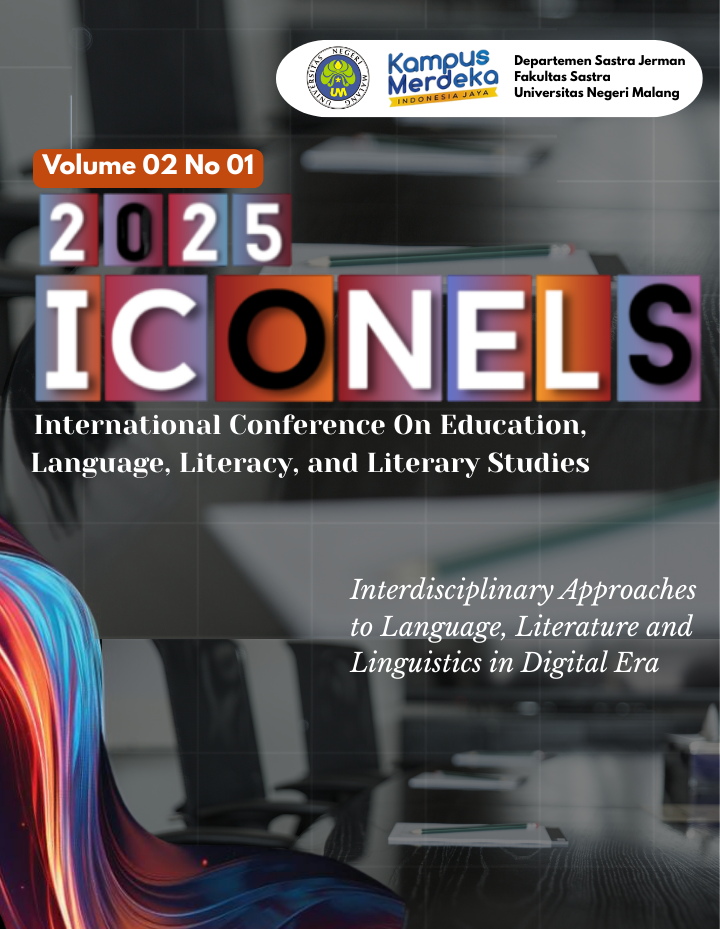The Polysemic Interpretation of the Verb 打: A Semantic Analysis of Articles from Qiāndǎo Rìbào (《千岛日报》)
DOI:
https://doi.org/10.63011/iconels.v2i1.70Keywords:
polysemy, 打verb, Qiandao Ribao newspaperAbstract
Polysemy in semantic studies refers to a linguistic phenomenon in which a single word has multiple related meanings. In Mandarin, the verb 打 (dǎ) is a commonly encountered polysemous word in basic Mandarin language learning. This study aims to analyze the various meanings of the verb 打 (dǎ) using a qualitative approach, focusing on its contextual usage. Using the Qiandao Ribao (《千岛日报》) newspaper, edition of December 1, 2023, as the primary data source, this study identifies the semantic variations of 打 (dǎ) based on its collocations and surrounding context. The findings reveal that 打 (dǎ) has 19 diverse meanings, ranging from physical actions and communication to abstract expressions. This research contributes to a deeper understanding of polysemy in Mandarin and enriches insights into the cognitive processes involved in meaning interpretation in foreign language learning. It is hoped that this study will serve as a significant reference in the semantic course, particularly in analyzing polysemous verbs like 打 (dǎ), which will become an analytical study material for students.
References
Cristee, Koh Yi Ting. (2009). 从语境诠释汉语多义词之研究= Chinese Polysemy: A Contextual Perspective. Singapore: National University of Singapore.
Cruse, D. A. (2002). Meaning in language: An introduction to semantics and pragmatics (2nd ed.). Oxford University Press.
Da, W. (2005). Polisemi dan perluasan makna verba dalam bahasa Mandarin. Beijing: Penerbit Bahasa dan Budaya.
Ou, Hsiu-Hui. (1993). 就[打] 說[打] 一國語詞頭[打] 字研究. Chang-Hwa: Da- Yeh Institute of Technology.
Rizka, A. C., & Wibisono, G. (2020). Makna verba 打 (dǎ) sebagai polisemi dalam kalimat bahasa Mandarin. Jurnal Bahasa Mandarin, 4(2). https://ejournal.unesa.ac.id/index.php/manadarin/article/view/46058
Downloads
Published
Issue
Section
License
Copyright (c) 2025 Amira Eza Febrian Putri, Karina Fefi Laksana Sakti, Miftakhul Ikhwandana, Vylla Amel Shabrina

This work is licensed under a Creative Commons Attribution-NonCommercial-ShareAlike 4.0 International License.



